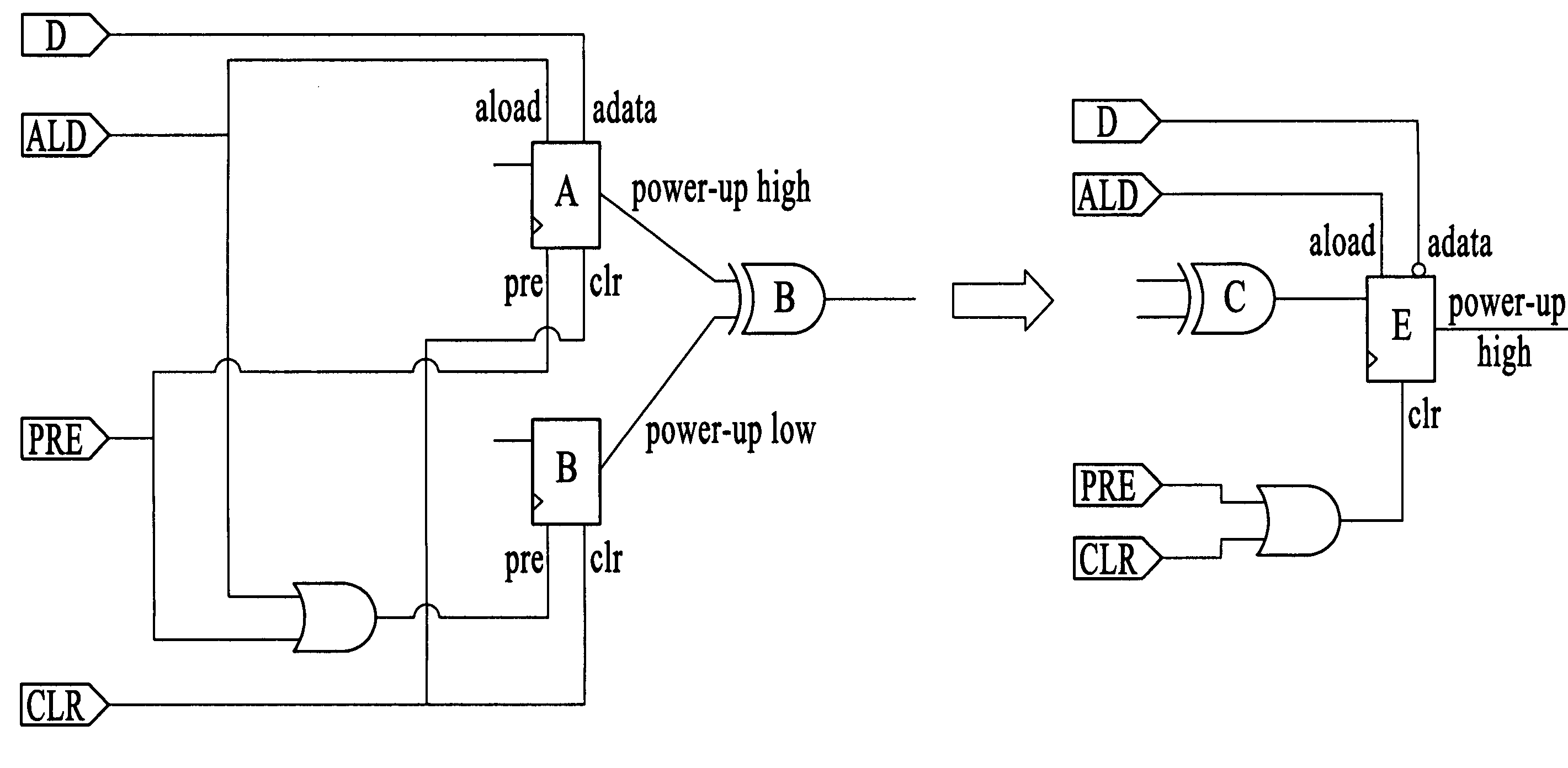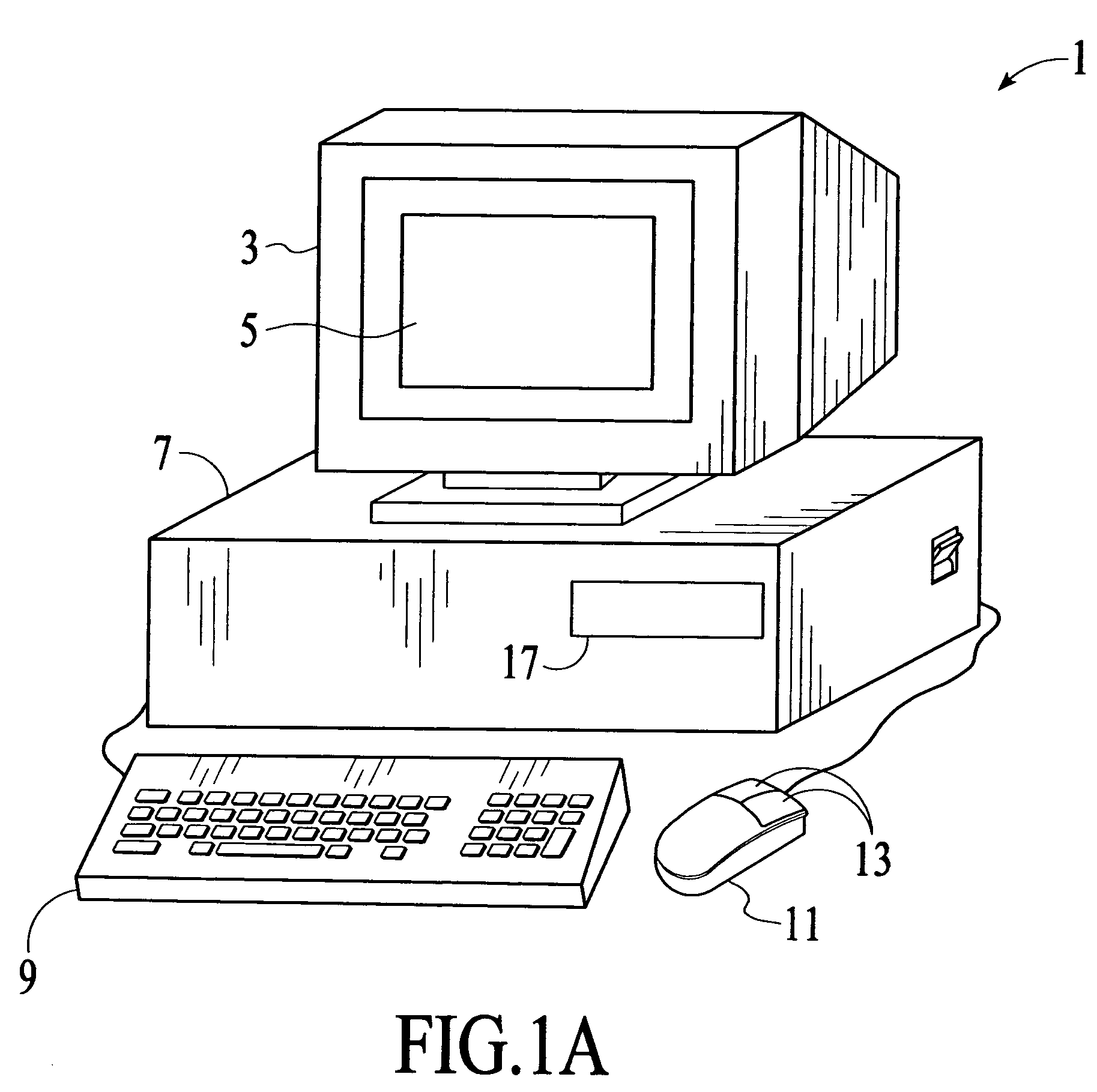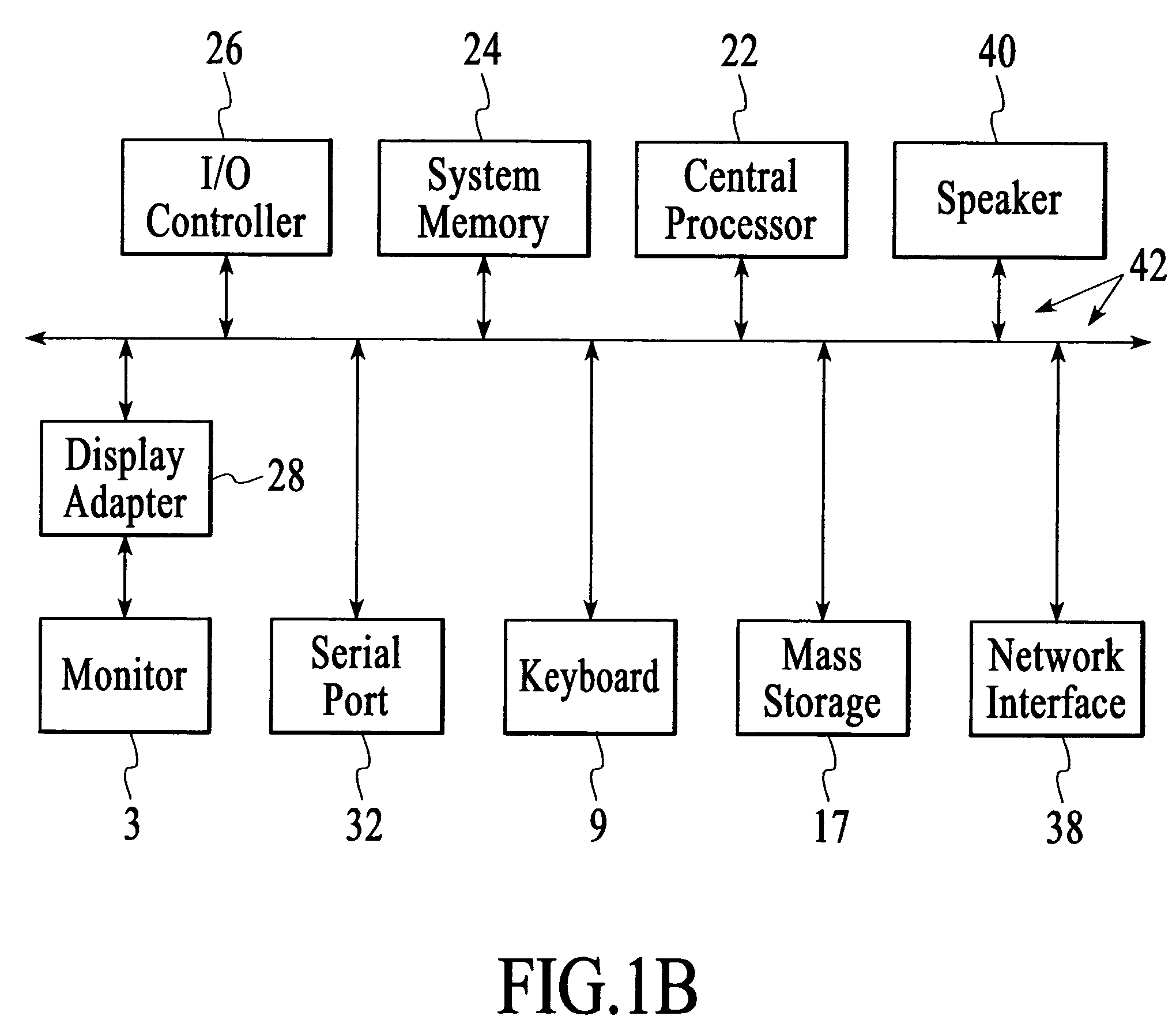Register retiming technique
a register retiming and register technology, applied in the field of electronic design automation of logic design, can solve the problems of increasing complexity of programmable logic integrated circuits such as pals, plds, fpgas, and increasing difficulty in ensuring the implementation of logic functions in an optimal way, and achieve the effect of improving the maximum operating frequency or fmax
- Summary
- Abstract
- Description
- Claims
- Application Information
AI Technical Summary
Benefits of technology
Problems solved by technology
Method used
Image
Examples
Embodiment Construction
Computer Aided Design System with Retiming
[0042]FIG. 1A shows a system of the present invention for performing register retiming. In an embodiment, software of the invention executes on a computer workstation system, such as shown in FIG. 1A. FIG. 1A shows a computer system 1 that includes a monitor 3, screen 5, cabinet 7, keyboard 9, and mouse 11. Mouse 11 may have one or more buttons such as mouse buttons 13. Cabinet 07 houses familiar computer components, some of which are not shown, such as a processor, memory, mass storage devices 17, and the like. Mass storage devices 17 may include mass disk drives, floppy disks, Iomega ZIP™ disks, magnetic disks, fixed disks, hard disks, CD-ROMs, recordable CDs, DVDs, DVD-R, DVD-RW, Flash and other nonvolatile solid-state storage, tape storage, reader, and other similar media, and combinations of these. A binary, machine-executable version, of the software of the present invention may be stored or reside on mass storage devices 17. Furthermo...
PUM
 Login to View More
Login to View More Abstract
Description
Claims
Application Information
 Login to View More
Login to View More - R&D
- Intellectual Property
- Life Sciences
- Materials
- Tech Scout
- Unparalleled Data Quality
- Higher Quality Content
- 60% Fewer Hallucinations
Browse by: Latest US Patents, China's latest patents, Technical Efficacy Thesaurus, Application Domain, Technology Topic, Popular Technical Reports.
© 2025 PatSnap. All rights reserved.Legal|Privacy policy|Modern Slavery Act Transparency Statement|Sitemap|About US| Contact US: help@patsnap.com



